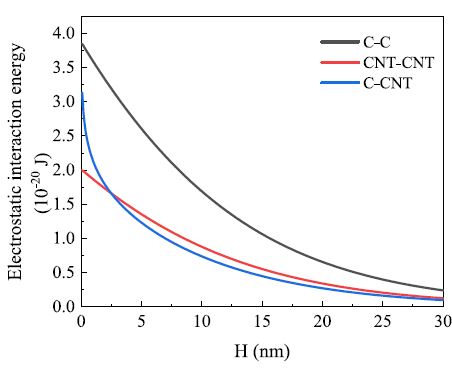Cement paste with well-dispersed multi-walled carbon nanotubes: Mechanism and performance

The research of functional cement composite materials has always been the focus in the field of concrete. Multi-walled carbon nanotubes (MWCNTs) as one of the conductive fillers can significantly improve the mechanical and electrical properties of concrete. However, the addition of MWCNTs seriously affects the fluidity of cement paste and the distribution of internal particles, which limit the full potential of MWCNTs. In this paper, the dispersion mechanism and performance improvement of cement paste with well-dispersed multi-walled carbon nanotubes are systematically studied from the perspective of expanded DLVO (EDLVO) theory analysis, microscopic ESEM image observation and macroscopic performance measurement. The results of the EDLVO theory indicate that the polar interaction energy between MWCNTs particles is the main cause of agglomeration, and the entanglement of MWCNTs particles in cement paste are observed in ESEM images. The comparison of dispersants shows that under the same fluidity, the addition of polycarboxylate superplasticizer (PCE) guarantees better mechanical properties than sodium dodecyl sulfate (SDS). Experimental results of hardened cement paste with PCE show that at the age of 28 days, when the MWCNTs content is 0.1%, 0.3% and 0.5%, the flexural strength can be increased by 12.9%, 15.8% and 2.0%, respectively, and the resistivity can be reduced by 16.9%, 19.7% and 40.3%, respectively. Cement paste with well-dispersed MWCNTs obtains excellent mechanical and electrical properties, which lay a foundation for the utilization of MWCNTs in cement composite as the electrothermal materials in practical engineering.
More: https://www.sciencedirect.com/science/article/abs/pii/S0950061820327513